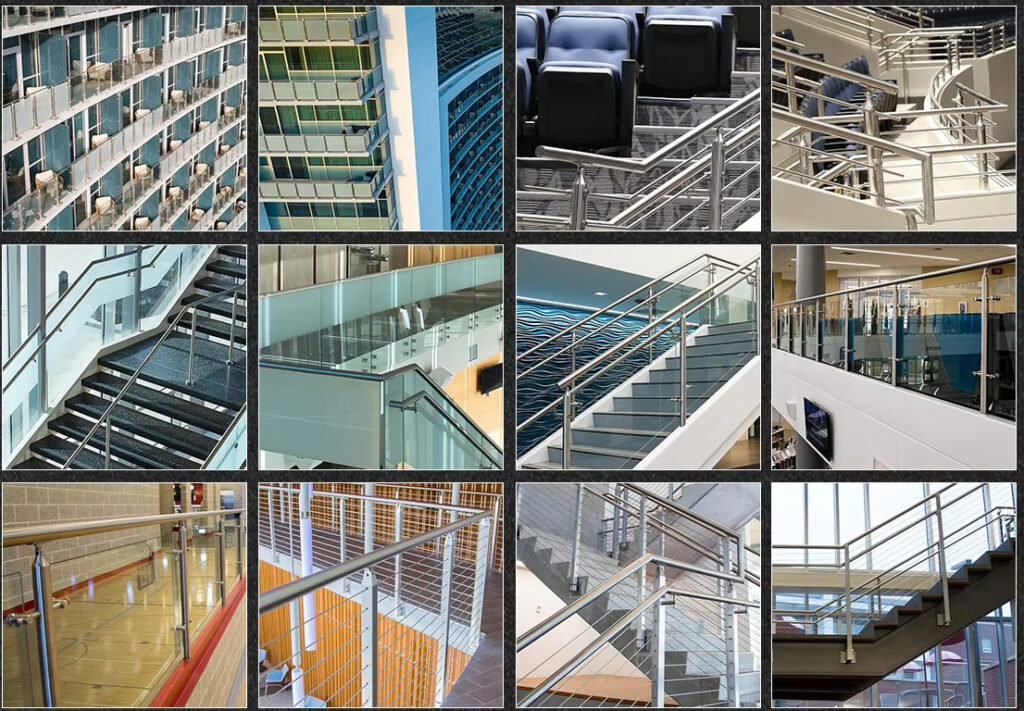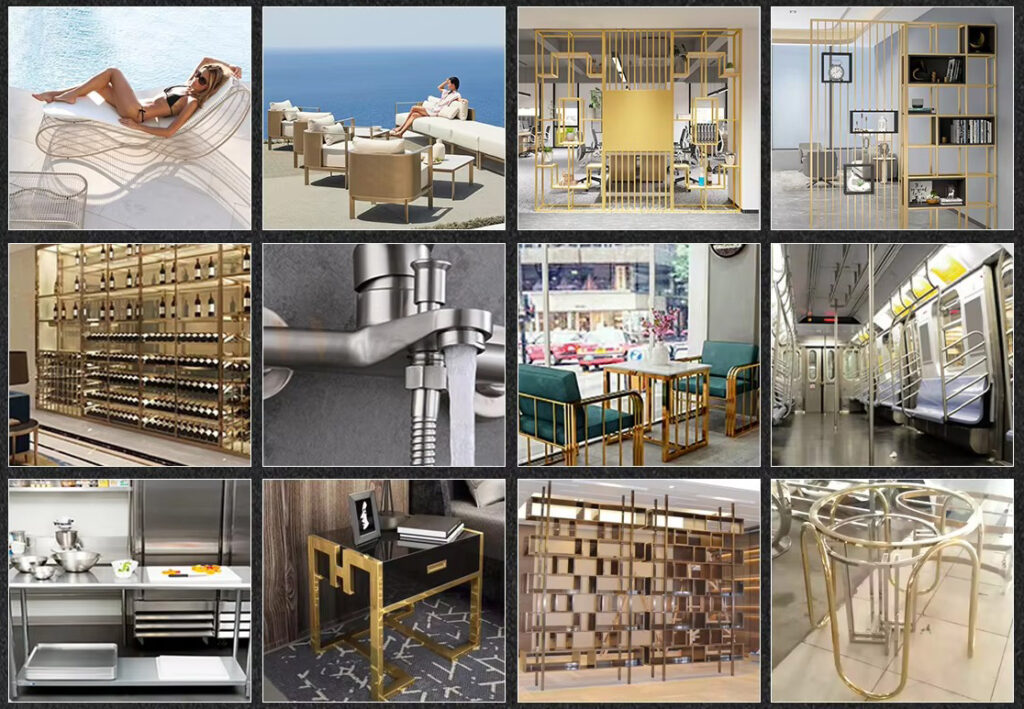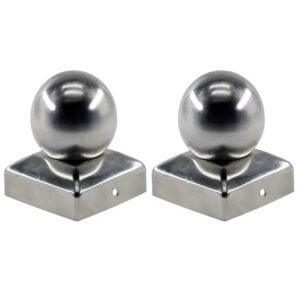
Post caps & end caps (round, square, decorative)
Post caps & end caps in 316L stainless steel. 23 years precision manufacturing for decorative applications worldwide. Request quote today.

Post caps & end caps in 316L stainless steel. 23 years precision manufacturing for decorative applications worldwide. Request quote today.
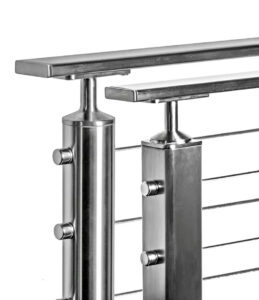
Square stainless steel posts in 304/316L grades. 23 years precision manufacturing for coastal projects worldwide. Request quote today.
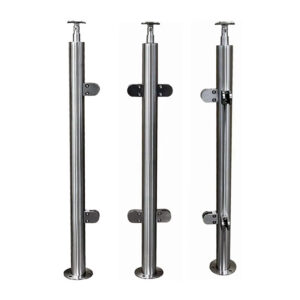
Stainless steel posts in 304/316L grades. 23+ years ODM fabrication for marine & commercial applications. Contact factory today.
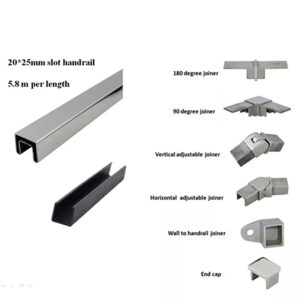
Square top rail components in 316L stainless steel. 23+ years precision manufacturing for global applications. Contact factory today.
Project-specific hardware in 316L stainless steel. 23 years delivering tailored solutions for specialized projects worldwide. Get factory quote today.
Non-standard size components in 316L stainless steel. 23+ years ODM manufacturing for unique sizing requirements globally. Contact us today.
| Specification | Standard Grade 304 | Marine Grade 316 | Competitive Advantage |
|---|---|---|---|
| Material Composition | 18% Chromium, 8% Nickel | 18% Chromium, 10% Nickel, 2-3% Molybdenum | Enhanced molybdenum for marine environments |
| Wall Thickness | 1.5mm – 5mm | 1.5mm – 5mm | Up to 40% thicker than standard aluminum posts |
| Post Diameter Options | 1.5″, 2″, 2.5″, 3″ Round; 2″×2″ Square | 1.5″, 2″, 2.5″, 3″ Round; 2″×2″ Square | Multiple size options for optimal structural design |
| Standard Heights | 36″, 42″, 48″ standard | 36″, 42″, 48″ standard | Custom heights up to 96″ available |
| Tensile Strength | 515-620 MPa | 515-620 MPa | 2x stronger than aluminum posts |
| Load Capacity | 1000 lbs vertical, 500 lbs lateral | 1200 lbs vertical, 600 lbs lateral | Exceeds building code requirements by 50% |
| Surface Finish | Brushed Satin, Mirror Polish | Brushed Satin, Mirror Polish | Consistent Ra 0.4-0.8μm finish quality |
| Corrosion Resistance | 15-20 years outdoor | 25+ years marine environment | 5-10x longer lifespan than steel posts |
Superior Structural Integrity
Stainless steel posts provide exceptional load-bearing capacity with tensile strengths reaching 620 MPa, significantly outperforming aluminum posts that typically fail at 200-300 MPa. Our precision-manufactured posts maintain dimensional stability under extreme weather conditions, eliminating the warping and degradation issues common with alternative materials.
Advanced Corrosion Resistance
The passive chromium oxide layer naturally forms on stainless steel surfaces, creating a self-healing barrier that prevents rust and corrosion. Grade 316 posts contain molybdenum for enhanced chloride resistance, making them ideal for coastal installations where aluminum posts would corrode within 3-5 years.
Maintenance-Free Performance
Unlike powder-coated aluminum or galvanized steel posts that require periodic refinishing, stainless steel posts maintain their structural integrity and appearance for decades without maintenance. The material’s inherent properties eliminate the recurring costs associated with painting, coating, or replacement that plague other post materials.
Temperature Stability
Stainless steel posts maintain their mechanical properties across temperature ranges from -40°F to 200°F, unlike plastic posts that become brittle in cold weather or aluminum posts that lose strength at elevated temperatures. This stability ensures consistent performance in all climate conditions.
Marine Dock and Waterfront Systems
Saltwater environments demand 316-grade stainless steel posts for dock railings, marina walkways, and waterfront structures. Our marine-grade posts resist chloride corrosion that destroys aluminum alternatives within 5 years, providing 20+ year service life in harsh coastal conditions while maintaining structural integrity against wave action and storm loads.
Commercial Building Railings
Office complexes, shopping centers, and institutional facilities utilize stainless steel posts for interior and exterior railing systems. The professional appearance and minimal maintenance requirements make them ideal for high-traffic areas where appearance and safety are paramount, eliminating the ongoing refinishing costs associated with painted steel alternatives.
Residential Deck and Patio Applications
Homeowners choose stainless steel posts for deck railings, pool enclosures, and garden structures where aesthetics and durability converge. The sleek appearance complements modern architectural designs while providing superior safety performance compared to wood or composite posts that may deteriorate or fail over time.
Industrial and Manufacturing Facilities
Heavy industrial environments require robust post systems for equipment guards, platform railings, and safety barriers. Stainless steel posts withstand chemical exposure, vibration, and extreme temperatures that would compromise other materials, ensuring worker safety and regulatory compliance in demanding applications.
Architectural and Structural Applications
Modern buildings incorporate stainless steel posts for both functional and aesthetic purposes in facades, atriums, and public spaces. The material’s strength-to-weight ratio and architectural finish options enable designers to create striking visual elements while meeting structural engineering requirements.
Q: What’s the difference between 304 and 316 stainless steel posts for outdoor applications?
A: Grade 304 provides excellent corrosion resistance for standard outdoor environments, lasting 15-20 years in typical conditions. Grade 316 contains 2-3% molybdenum for superior chloride resistance, essential for marine, coastal, or pool applications where it can last 25+ years. Choose 316 for locations within 10 miles of saltwater or where de-icing salts are used.
Q: How do stainless steel posts compare to aluminum posts in terms of structural performance?
A: Stainless steel posts offer 2-3 times the tensile strength of aluminum posts, with load capacities exceeding 1000 lbs vertical compared to 300-500 lbs for aluminum. While aluminum posts may bend or fail under stress, stainless steel maintains structural integrity throughout its service life. The initial cost is 50-70% higher, but lifecycle costs favor stainless steel due to eliminated replacement needs.
Q: What wall thickness is recommended for different post heights and applications?
A: For 36″ residential railings, 1.5-2mm wall thickness typically suffices. Commercial 42″ posts require 2-3mm walls, while industrial or high-wind applications may need 3-5mm walls. Post diameter also affects structural requirements – larger diameters can use thinner walls for equivalent strength.
Q: Can stainless steel posts be welded or modified on-site?
A: Yes, but proper procedures are critical. Use 308L welding electrodes for 304 grade and 316L electrodes for 316 grade to maintain corrosion resistance. Post-weld passivation treatment restores the protective oxide layer. Field modifications should be minimal as they may compromise structural integrity.
Q: How do you determine proper post spacing for railing systems?
A: Post spacing depends on infill type, wind loads, and building codes. For cable railings, posts typically space 4-6 feet apart for residential and 3-4 feet for commercial applications. Glass infill requires closer spacing of 3-4 feet due to higher wind loads. Structural calculations should verify adequacy for specific conditions.
Q: What mounting options are available for stainless steel posts?
A: Common mounting options include surface mount with base plates, core mount through deck surfaces, and fascia mount to deck edges. Surface mounting is fastest and most versatile, while core mounting provides maximum strength for high-load applications. Each method requires specific hardware and installation procedures.
Q: How do stainless steel posts perform in seismic or high-wind environments?
A: Stainless steel’s ductility and strength make it excellent for dynamic loading conditions. Posts designed per seismic codes can flex during earthquakes without brittle failure, unlike cast iron or concrete posts. For hurricane zones, engineered connections and proper anchoring enable posts to withstand extreme wind loads.
Q: What maintenance is required for stainless steel posts?
A: Minimal maintenance is required – periodic cleaning with mild soap and water maintains appearance. Marine environments benefit from monthly freshwater rinses to remove salt deposits. Unlike painted posts that require refinishing every 3-5 years, stainless steel never needs protective coatings or painting.
Industry Standards Compliance
Our stainless steel posts conform to ASTM A240 specifications for stainless steel plate and sheet materials, ensuring consistent chemical composition and mechanical properties. All posts meet ASTM A276 requirements for stainless steel bars and shapes, with certified mill test reports documenting compliance for each production lot.
Structural Design Standards
Post designs comply with ASCE 8-90 specifications for cold-formed stainless steel structural members, providing load and resistance factor design (LRFD) criteria for axial and lateral loading. Structural calculations follow International Building Code provisions for guardrail systems, ensuring adequate safety factors for all applications.
Material Certifications
Grade 316L stainless steel contains minimum 16% chromium, 10% nickel, and 2% molybdenum per ASTM specifications, providing superior corrosion resistance in chloride environments. Chemical analysis certificates verify composition compliance and trace element control for consistent performance and weldability.
Quality Management Protocols
Manufacturing processes follow ISO 9001:2015 quality management standards with documented procedures for material handling, forming, welding, and finishing operations. Non-destructive testing per AWS D1.6 stainless steel welding code ensures weld integrity and structural reliability.
Corrosion Testing Verification
Grade 316 posts exceed ASTM B117 salt spray testing requirements, showing no visible corrosion after 2000+ hours of exposure. Comparative testing demonstrates aluminum posts exhibit significant pitting after 500 hours, while stainless steel maintains original properties throughout extended exposure periods.
Load Testing Documentation
Each post configuration undergoes proof load testing at 150% of rated capacity with ultimate load testing to failure per structural engineering standards. Safety factors of 2.5:1 minimum ensure reliable performance under code-specified loads with adequate margin for dynamic conditions and installation variations.

